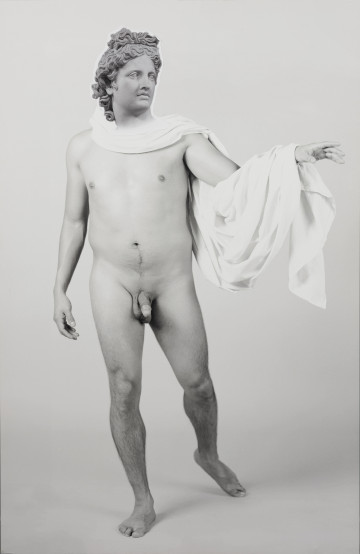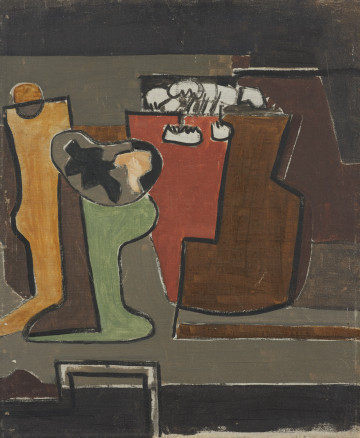
Apollo
2004
National Museum in Szczecin
Part of the collection: European classics of modernity
Marek Włodarski (actually Henryk Streng) was born into a Polish-Jewish family in Lviv. Between 1920 and 1924, he studied at the Free Academy of Fine Arts there and then at the Industrial School, where he joined the studio of Kazimierz Sichulski. His colleagues included Otto Hahn, Jerzy Janisch, Aleksander Riemer, Margit Reicherówna and Roman Sielski - future members of the Association of Artists 'Artes'. The graduation coincided with the opening of the private Académie Moderne in Paris, to which the names of its founders and lecturers, Amédée Ozenfant and Fernand Léger, attracted. Streng went to live with Janisch, and Reicherówna with Sielski. The return to her hometown was marked by Janisch's founding of Artes in 1929, which Streng joined in 1930, and in 1931 Reicherówna and Sielski were married. It was during this period that most of Streng's works, several oil paintings and numerous drawings, devoted to the theme of family, date from. In them, the artist freed himself from the influence of Léger, but he seemed to remain under the spell of the surrealism brought from Paris. The compositions are filled with fragmented human anatomy, architectural elements, and the ruins of bourgeois glamour. Like in the grotesque literature of Bruno Schulz (whom Streng met in 1930 during the Spring Salon at the Palace of Art in Lviv), the ruins seem to illustrate the disintegration of the old world. A futuristic vision of the future is suggested by the writer from Drohobych: We admit openly: we will not emphasise durability or solidity of execution, our creations will be as if makeshift, made for once. If they are human, we will give them, for example, one side of the face, one hand, one leg, namely the one that will be necessary for their role. (On the back they can simply be sewn up with canvas or whitewashed (Bruno Schulz, Opowiadania. Opowiadania. Wybór esejów i listów, [Stories, selection of essays and letters], ed. Jerzy Jarzębski, Wrocław-Warszawa-Kraków 1998, p. 37). We know very little about the painter's family: he destroyed all his documents in the occupation hiding place provided by Janina Brosch - painter, Żegota activist and future wife.
Szymon Piotr Kubiak
Author / creator
Dimensions
cały obiekt: height: 72 cm, width: 100 cm
Object type
painting
Creation time / dating
Creation / finding place
Identification number
Location / status

2004
National Museum in Szczecin

1948
National Museum in Szczecin

1936
National Museum in Szczecin
DISCOVER this TOPIC
National Museum in Szczecin
DISCOVER this PATH
Educational path